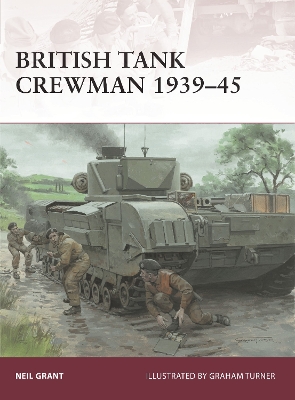Warrior
1 primary work • 2 total works
Book 183
Great Britain had introduced the tank to the world during World War I, and maintained its lead in armoured warfare with the 'Experimental Mechanised Force' during the late 1920s, watched with interest by German advocates of Blitzkrieg. Despite these successes, the Experimental Mechanised Force was disbanded in the 1930s, making Britain relatively unprepared for World War II, both in terms of armoured doctrine and equipment.
This fully illustrated new study examines the men who crewed the tanks of Britain's armoured force during World War II, which was only four battalions large in 1939. It looks at the recruitment and training of the vast numbers of men required, their equipment, appearance and combat experience in every theatre of the war as the British armoured division sought to catch up with the German Panzers.
This fully illustrated new study examines the men who crewed the tanks of Britain's armoured force during World War II, which was only four battalions large in 1939. It looks at the recruitment and training of the vast numbers of men required, their equipment, appearance and combat experience in every theatre of the war as the British armoured division sought to catch up with the German Panzers.
The 1st Battalion, The Rhodesian Light Infantry, was one of the most innovative and successful counter-insurgency units in modern history. Formed as a commando battalion in 1964 after the dissolution of the Federation of Rhodesia and Nyasaland, the RLI was an all-white unit made up of South Africans and men from the UK, Europe and US. It was a key weapon in independent Rhodesia's struggle against the Zimbabwe African National Liberation Army and Zimbabwe People's Revolutionary Army during the bloody Rhodesian Bush War. This comprehensive study explores the unit's dramatic history, revealing the RLI's fearsome airborne and combat capacity, which gave the unit, at times, near total tactical superiority against its opponents.

